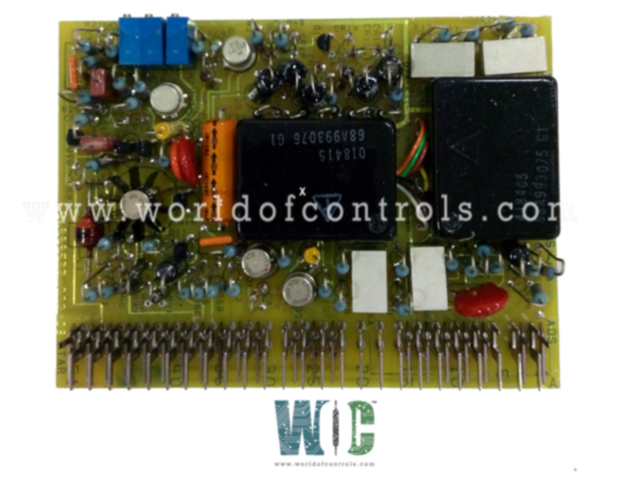
World Of Controls understands the criticality of your requirement and works towards reducing the lead time as much as possible.
IC3600AIADICID - Voltage Level Converter Module is available in stock which ships the same day.
IC3600AIADICID - Voltage Level Converter Module comes in UNUSED as well as REBUILT condition.
To avail our best deals for IC3600AIADICID - Voltage Level Converter Module, contact us and we will get back to you within 24 hours.
SPECIFICATIONS:
Part Number: IC3600AIADICID
Manufacturer: General Electric
Series: Mark I & II
Product Type: Voltage Level Converter Module
Number of relay channels: 12
Power supply voltage: 28 V dc
Technology: Surface mount
Redundancy: Type Simplex, Dual, TMR
Operating temperature: -40 to +70°C
Size: 15.9 cm high x 17.8 cm
Weight: 0.8kg
Repair: 3-7 Day
Availability: In Stock
Country of Origin: United States
FUNCTIONAL DESCRIPTION:
IC3600AIADICID is a Voltage Level Converter Module manufactured and designed by General Electric as part of the Mark I & II Series used in GE Speedtronic Turbine Control Systems. A Voltage Level Converter Module, often referred to as a voltage level shifter or level translator, is an electronic device used to convert the voltage levels of digital signals between different logic families or voltage standards. It is commonly used in electronics and embedded systems to enable communication and compatibility between devices that operate at different voltage levels. Here's how a voltage level converter module typically works:
Input Signals: It takes digital input signals at one voltage level and converts them to another voltage level. For example, it can convert 3.3V logic signals to 5V logic signals or vice versa.
Bi-Directional or Uni-Directional: Depending on the design, these modules can either be uni-directional (supporting conversion in one direction) or bi-directional (supporting conversion in both directions).
Voltage Compatibility: They ensure that the output signals are compatible with the requirements of the target device. This is essential because connecting devices with mismatched voltage levels can damage the components or lead to unreliable communication.
Level Shifting: The module employs various circuitry, such as level shifters, voltage dividers, or MOSFETs, to change the voltage levels of the input signals while maintaining signal integrity.
High and Low Logic Levels: It's crucial to handle both high and low logic levels correctly, ensuring that logic 1 at the input corresponds to logic 1 at the output and the same for logic 0.
Propagation Delay: Some level converters introduce a small delay in signal propagation, so designers should consider this when designing their circuits, especially for high-speed applications.
WOC has the largest stock of GE Speedtronic Control System Replacement Parts. We can also repair your faulty boards. WORLD OF CONTROLS can also supply unused and rebuilt backed-up with a warranty. Our team of experts is available round the clock to support your OEM needs. Our team of experts at WOC is happy to assist you with any of your automation requirements. For pricing and availability on any parts and repairs, kindly get in touch with our team by phone or email.
What is a Voltage Level Converter Module?
A Voltage Level Converter Module is an electronic device used to convert the voltage levels of digital signals between different logic families or voltage standards. It ensures compatibility between devices that operate at different voltage levels.
When are Voltage Level Converter Modules used?
These modules are used when interfacing devices that operate at different voltage levels, such as microcontrollers, sensors, displays, and communication interfaces, to prevent damage and ensure reliable communication.
How does a Voltage Level Converter Module work?
It uses various circuitry, like level shifters, voltage dividers, or MOSFETs, to change the voltage levels of input signals while preserving signal integrity.